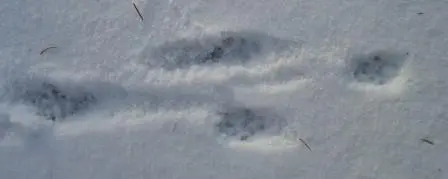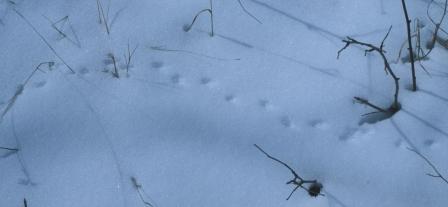by Carl Strang
This year’s winter series has been a review of the prehistoric life and geologic history of northeast Illinois. Each chapter has summarized current understanding, gleaned from the literature, of what was going on with life on Earth in a particular span of time, what we know about the local landscape, and what we can say about local life. I include some references, particularly to papers published in the journal Science which commonly is available at public libraries. Contact me if you need sources for other items. The Earth is so old that every imaginable environment was here at some point, from ocean depths to mountaintops, from equatorial tropics to tundra, and from wetlands to desert. Today’s chapter concludes the series.

At last we reach the most recent times. This mastodon and its kind lived in our area in the recent past.
Pleistocene Epoch (1.64 million years ago to the present day)
The Pleistocene Epoch (named 1839), literally “most recent,” marks the latest series of continental glacial times. We are in an interglacial interval, regarded as part of the Pleistocene by some, by others named separately the Holocene (1885) or Recent (1833) Epoch.
Life on Earth. This is the time when our human species Homo sapiens evolved, along with the rest of the modern species. Our species originated in Africa around 200,000 years ago as it separated from its earlier hominid precursors, then began to migrate out of Africa around 100,000 years ago, fanning out into Europe, Asia, Polynesia-Australia and ultimately North America. Homo erectus earlier (1.5 million to 770,000 years ago) ranged from Kenya to China (Science 323:1197, 1419). Shaped tools and red ochre use suggest modern-like behavior had begun to appear by 164,000 years ago (Science 318:777). Genetic studies indicate that the Neandertals were a separate species, though they shared with us a gene for speech communication (Science 318:546). Skin color may have diversified in our species much more recently, with pale skins in some races developing only within the past 5300-12,000 years (Science 316:364).
There were new arrivals in North America from South America: 2 sloth genera (Nothrotheriops and Eremotherium), opossum, anteaters. And, from Eurasia, mammoths, bison, saiga, musk oxen, and humans. The polar bear evolved away from brown bear ancestors of the southeast Alaska area around 150,000 years ago. Many large birds and mammals became extinct, in many areas (including North America) because of human hunting (Science 300:885; 306:70).
Local landscape. This was a time of ice ages, more than 20 periods of continental glaciation alternating with periods when the glaciers retreated (only 4 of these reached as far as the Mississippi River drainage basin). The dominant theory ties the growth and ebbing of glaciers to regular cycles in the Earth’s orbit, tilt, and precession. Up until 1 million years ago, the glacial cycles were 41,000 years long, corresponding to the cycling of the Earth’s tilt. For the past million years the cycle has become 100,000 years long, for reasons that are unexplained but may be connected to a change in atmospheric carbon dioxide.
Rotten or weathered rock had formed at the surface; most of this was removed by Pleistocene glaciers. Glaciers don’t remove much thickness of bedrock, however, carrying mostly fractured pieces. In the DuPage County area, the glaciers scoured the Silurian dolomite bedrock clean of any sediments, except for the Devonian or Mississippian marine clays in cracks on the upper surface (this is why there are no pre-Pleistocene terrestrial fossils in much of northeast Illinois).

If we could clear the glacial deposits from our bedrock we might see something like this, grooves scratched on the surface by the glacier as it pushed southwest out of the Lake Michigan basin. Rock Point, Ontario.
Dolomite bedrock escarpments such as the one tracing the western and southern boundary of the Lake Michigan basin, and other highlands such as the northern Wisconsin Arch, played a significant role in channeling glacial flow. Lake Michigan started as a south-flowing stream. The sequence and timing of events: the Nebraskan glacial advance 1.8mya (million years ago), then the Aftonian interglacial stage, then the Kansan advance 900-600kya (thousand years ago), then the Yarmouthian interglacial, then the Illinoian advance 400-300kya, then the Sangamon interglacial, then the Wisconsinan glacial advance began 100kya and ended 18kya. Within the Wisconsinan there was an Altonian advance 70-30kya that reached northeast Illinois, a retreat 30-22kya called Farmdalian time, and the largest final advance 22-18kya called the Woodfordian.
A continental glacier was not a single body, but rather several rivers of ice, or lobes, flowing side by side. The Silurian escarpment divided the Lake Michigan lobe from the Green Bay lobe. Kettle Moraine in Wisconsin is a glacial deposit left between those lobes. The Lake Michigan Lobe had to climb (be pushed) several hundred feet to overtop the escarpment and enter northeast Illinois.
As the glacier advanced, the Straits of Mackinac outlet became blocked, and Lake Michigan drained south through the Chicago and Des Plaines Rivers. The Glenwood phase of Glacial Lake Chicago, as it is called, was followed by alternating advances and retreats that blocked and opened the Mackinac Straits and further eroded the Des Plaines valley. Because the weight of the glacier had depressed the crust, for a time after the last glacial retreat the river through the Straits lowered Lake Michigan (in that incarnation called Lake Chippewa) to the point where it was much smaller and occupied only part of its current area. Crustal rebound later raised the northern end of the lake to the point where the current basin filled. When the Upper Peninsula of Michigan, Lake Huron and part of Lake Superior were cleared of retreating glacial ice but other outlets still were blocked, the Des Plaines became the major drainage for all three lakes.

In 2007-2008 Mastodon Camp, a partnership between the Forest Preserve District of DuPage County and the Field Museum of Natural History, gave high school teachers and students an opportunity to participate in a dig. Bits of mastodon bone and tusk, as well as buried black spruce trees and cones, were the main physical product from the site at Pratts Wayne Woods Forest Preserve.
During the latest, Wisconsin glaciation, the permafrost (tundra) zone was 50-120 miles wide beyond the glacial margin, and the mean annual temperature was about 5 degrees C cooler than today. Most of our familiar prairie and forest species were restricted to rather small refuges in the South during the glacial maximum, though oaks and hickories occupied a large part of the southern U.S. Species occurred in unfamiliar combinations, which changed as environmental conditions shifted (i.e., distributed themselves according to individual species tolerances rather than in community clusters of species).
According to recent work with cores from Nelson Lake in Kane County and Brewster Creek in DuPage, our landscape originated 18,000 years ago as the Wisconsin glacier melted away. By 17,000 years ago the glacier locally had shrunk back to the Lake Michigan basin. Open sedge tundra with some spruce trees invaded the zone nearest the glacier (18,000-16,000 years ago), then white spruces filled in to form a recognizable northern coniferous forest until around 15,000 years ago. The climate was dry and windy, piling a layer of loess (silty material) on top of the glacial till and outwash. The wind diminished and the climate became wet around 15,000 years ago because of the collision of warm air from the Gulf with polar air from the glacier north of us. White spruce declined, with black spruce becoming important in low wet areas, and black ash and fir along with a variety of deciduous trees invading the uplands. The glacier retreated to Canada by 13,000 years ago, then advanced in a new cool period as far as northern Wisconsin and the U.P. of Michigan (this may have been a Northern-Hemisphere-only cooling: Science 318:86), and began its final retreat 11,650 years ago. Then alder, birch, jack pine, ironwoods and elms increased locally, and additional trees invaded until a mix of deciduous species, including lots of oaks, was achieved. Beginning around 10,000 years ago there was a drying period, which led to the spread of prairie through our area. The prairie then retreated a little, so that by 6200 years ago our area became a prairie with islands of woodlands.
Local life. After the Wisconsin glacier retreated, first there was tundra, home of woolly mammoths (grazers), musk oxen, caribou, collared lemmings and other animals now extinct or found only in arctic Canada and Alaska. People arrived at this time, hunting with spears (one of the earliest human sites in North America, with butchered mammoth bones dated at 12,500 years ago, has been discovered just north of here near Kenosha; Science 305:590). As the forest filled in the warming landscape, additional mammals included moose, stag moose, scimitar cats, dire wolves, giant beavers, snowshoe hares, Jefferson’s ground sloths and mastodons (unlike mammoths these were browsers which also ate walnuts, spruce cones and other seeds; some species such as Kentucky coffee tree and osage orange are thought to be relatively uncommon today because they have lost mastodons and other large herbivores as seed dispersers). During the time of deciduous forest, local mammals included mountain lion, bobcat, red wolf, elk, white-tailed deer, raccoon, gray fox, porcupine, black bear, flying squirrel and gray squirrel. The prairie and mixed prairie savanna of historical times included today’s familiar animals, along with black bears, badgers, mountain lions, red wolves, elk and bison.
Clovis points have been found in DuPage County, indicating that some of those early big animal hunters (known as Paleoindians) were here. The largest animals became extinct, thanks in large part to the Paleoindians’ killing them faster than they could reproduce (Science 326: 1100). Subsequent human cultures wandered less, and shifted to more of a hunting-gathering economy in the several thousands of years of the Archaic Period. Thrust spears and spear-throwers did not give way to bow and arrow in North America until later, during the Woodland Period that began with early signs of agriculture about 2000 years ago. Agriculture did not become an important part of the local economy until the most recent 1500-1000 years. The Woodland people were even more sedentary than Archaic people, and used pottery. Mississippian and Oneota cultural influences, centered in west central Illinois and Wisconsin, respectively, were characterized by increasing social-political complexity made possible by corn-based agriculture. Ultimately the familiar tribes emerged, in northeastern Illinois the Miami followed by the Potawatomi.
For a time in recent years, a group of researchers attempted to make the case that a comet or other extraterrestrial object exploded over North America, causing a climatic cooling (the Younger Dryas time), ending the Clovis culture and resulting in the extinction of the North American megafauna. By the end of 2010 a number of studies had invalidated the supposed evidence for this idea and shown that the Younger Dryas was the result of a sudden influx of cold, fresh glacial meltwater into the northern oceans that for a time shut down the Gulf Stream current.
















